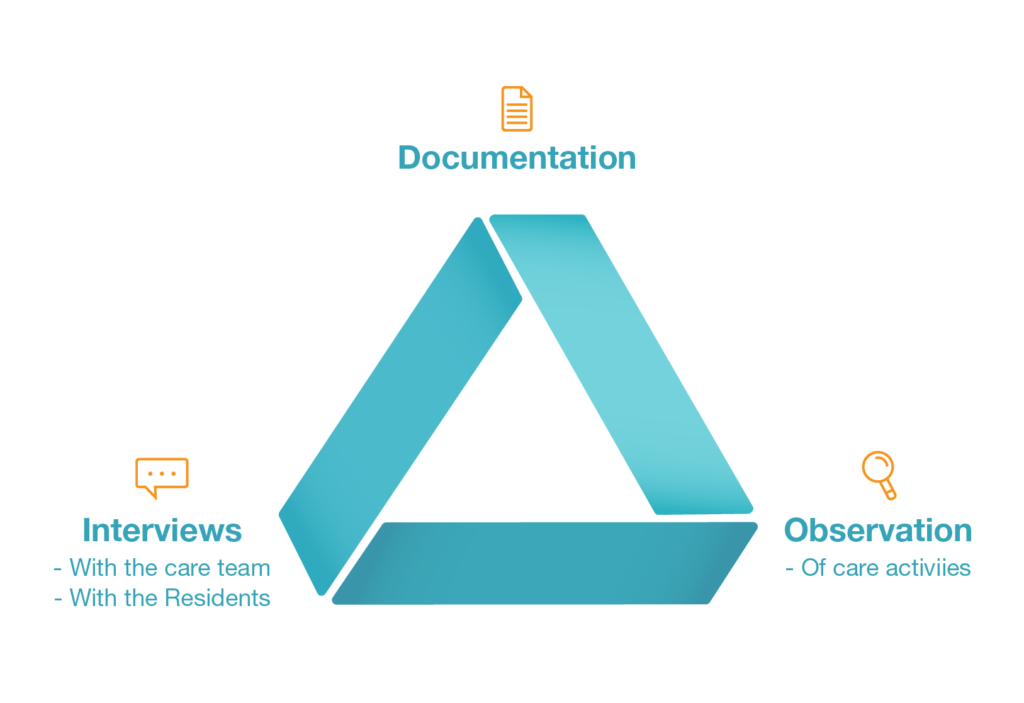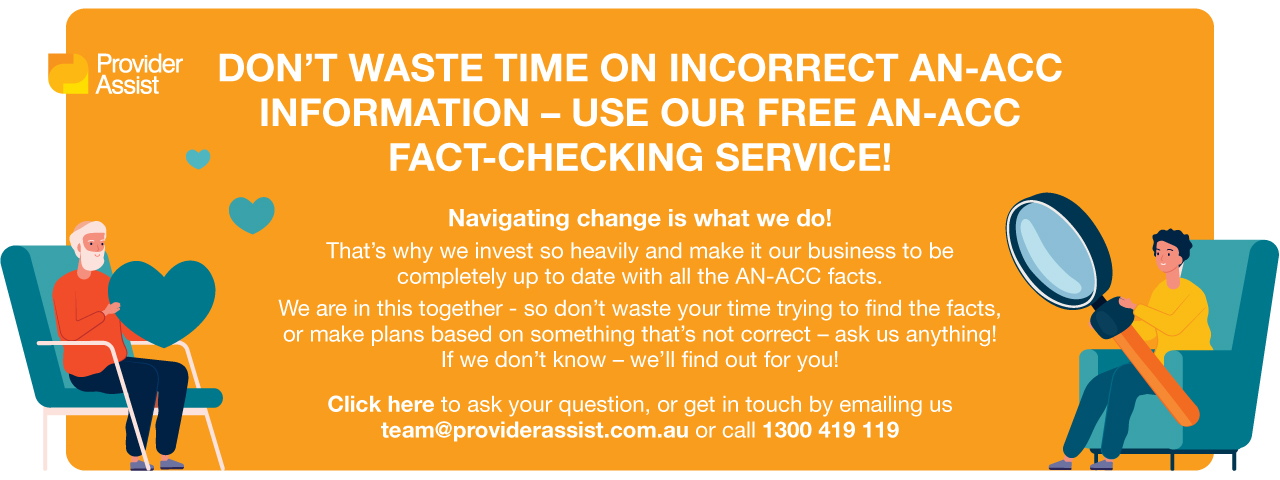The AN-ACC process will be very similar to the ACFI Process with the major difference being that the external assessor would be overlaying the funding tool, rather it being your responsibility.
1. You identify Residents for the assessment workflow (same as ACFI)
2. You complete comprehensive Assessment of your residents (same as ACFI)
3. You prepare Care Plans to meet the Standards and the individual’s goals and preferences (same as ACFI but with a difference in the balance of the prescribed ACFI components [funded care] and non-ACFI prescribed Components [unfunded care])
Your Organisation’s job is to conduct the Clinical Assessment. Identify care needs through Holistic Comprehensive Assessment using an expert Aged Care Clinician who understands how AN-ACC works. Just like with ACFI – Step 1 is care needs identification. This action determines the care burden and should translate into entitled AN-ACC being received.
4. At an AN-ACC Assessment visit:
a. AN-ACC Assessor uses your documentation, resident/carer interview and observation to compile AN-ACC Assessments.
Different to ACFI – but very similar to ACFI Validation:
Also – rather than them completing a comprehensive clinical assessment, they will use your clinical documentation, Resident and carer observation and interview to compile these assessments. This means that you have a significant opportunity to influence your funding in step 2 and make sure you’re receiving your entitlements – this is not the AN-ACC Assessor’s responsibility.
b. The Assessor will submit the assessment results into the assessor portal. The Department’s system will use its algorithms to allocate a classification. The Department has indicated they DO NOT intend to release these algorithms and the AN-ACC Assessors are not privy to this information.
Resource allocation: One of the most different and positive things about AN-ACC is this statement:
“ While ACFI funds for specific care activities, AN-ACC funds overall care burden. Let’s explain: ACFI dictates how you should spend the funding i.e. 4bs. AN-ACC more says: ‘This is how much it should cost to care for your Resident with these care needs and how you spend it is up to you. This is because you are governed by the Accreditation Standards to meet the needs, goals and preferences of the Resident.’”
This creates a wonderful opportunity to provide more tailored, funded care.
One of the most universal resource allocations that will be impacted is pain management. We will provide this analysis in a future report when it’s the right time to be planning for this change.








